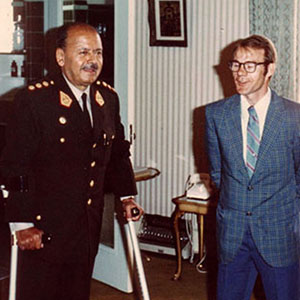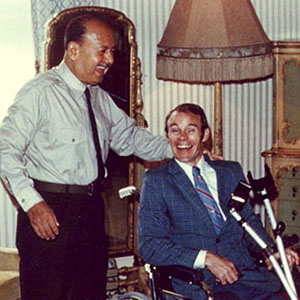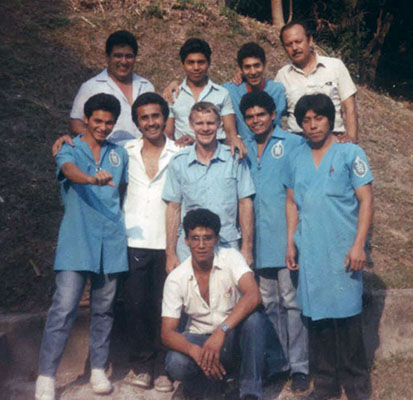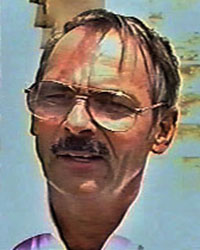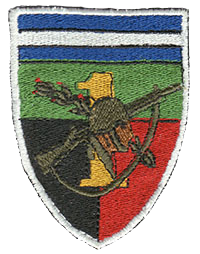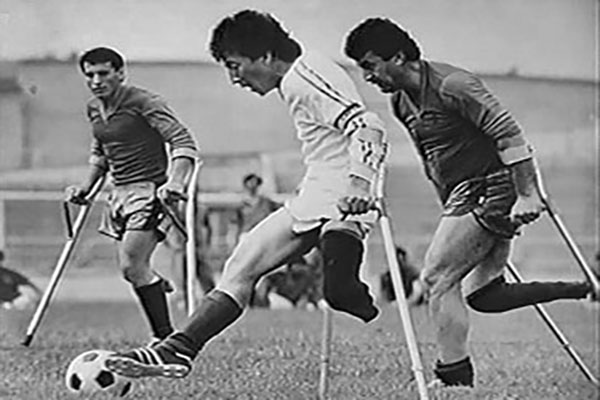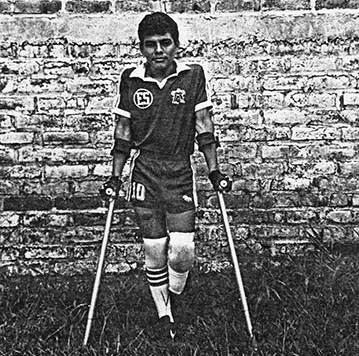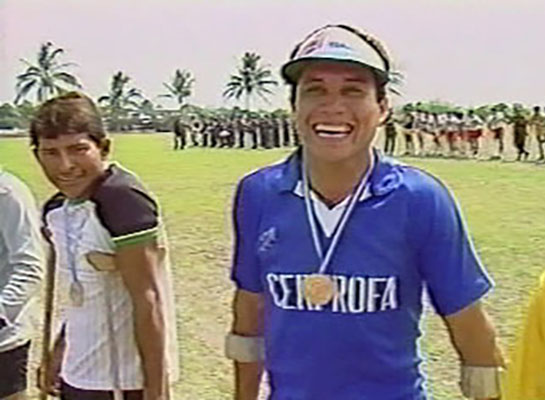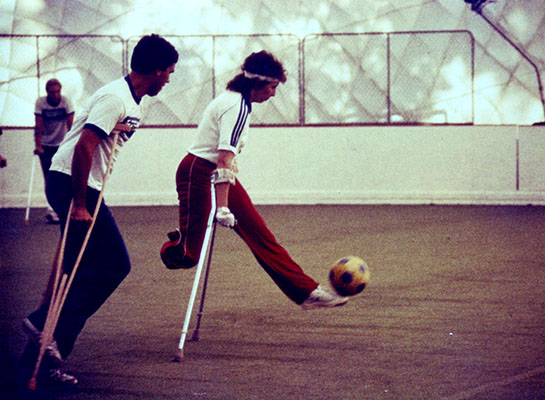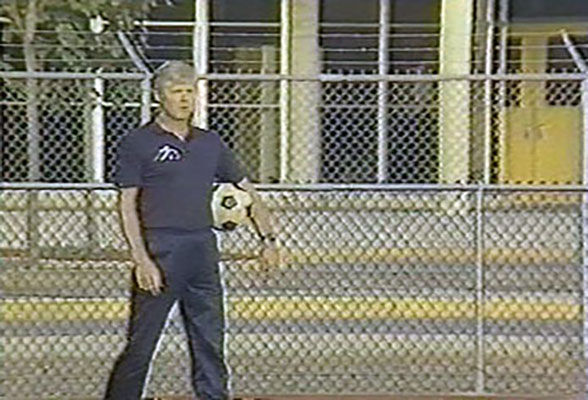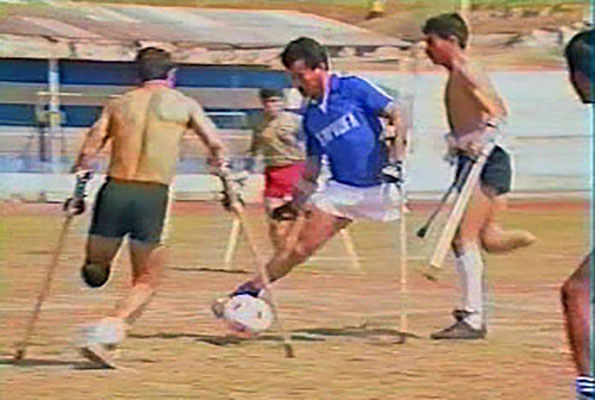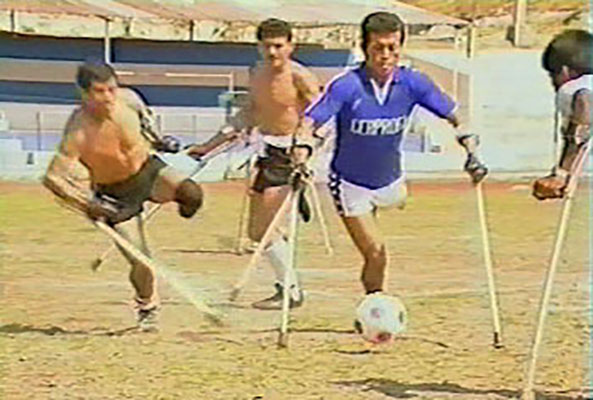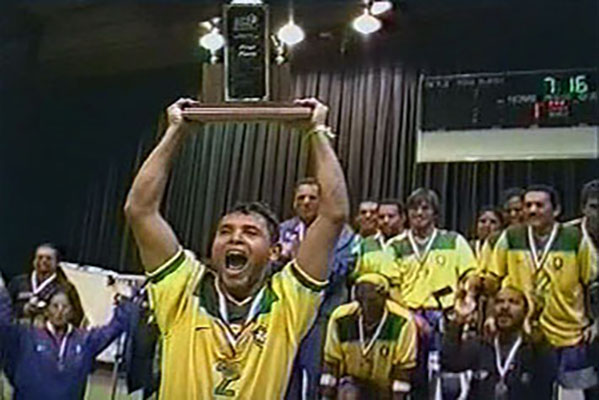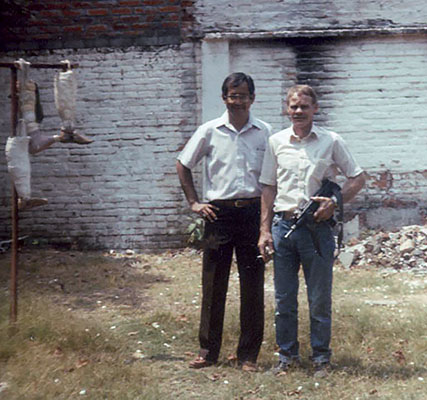DOWNLOAD
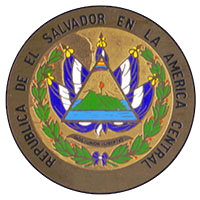
Helping the government end the eleven-year war in El Salvador was the major COIN (counterinsurgency) success story for Army special operations forces after Vietnam. Congress imposed severe limitations (“55 Man Rule”) on the training efforts of U.S. Military Group–El Salvador, and the American role was not a popular one. The fast-growing, around-the-clock news agencies focused U.S. national attention on the negative aspects in their eagerness to win audiences and gain commercial advantage. El Salvador, a developing nation, was the smallest country in Central America with the largest population.
Its neighbor Nicaragua had fallen to Sandinistas in 1979, and was being supported by Cuba and the Soviet Union. In the 1980s, COIN was considered a “bad word” because the Army leadership in Washington was trying to bury Vietnam. Thus, lukewarm would be a polite description of how the ARSOF mission in El Salvador was accepted and supported by the Fort Bragg commanders during the war. However, all the negatives became the impetus to challenge special operations majors and below to insure that the American military contribution enabled the government to survive in El Salvador. The following article explains how the results of the war had positive impacts on veterans and civilians that could not be refuted by rebellious FMLN (Farabundo Marti National Liberation Movement) because they had perpetrated the damages.
The Veritas 2:1 article, “Los Artefactos Explosivos Improvisados”: Spanish for IEDs (Improvised Explosive Devices), discussed field expedient explosives and mines that were employed by the FMLN during the eleven-year war in El Salvador. Loss of limb casualties, Salvadoran military and civilian, from mines called quita patas (foot poppers) and IEDs numbered nearly 10,000 in 1990. In 2003, Colombia had the third largest number of mine victims in the world (Afghanistan and Cambodia were first and second respectively). While land mine use in other countries has dropped significantly, more IEDs and mines are being used now in Colombia than ever before. In the first three months of 2005, one of every three soldiers killed in Colombia was a mine or IED victim.1
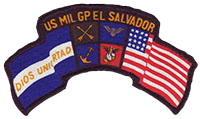
The purpose of this article is to explain how U.S. Military Group–El Salvador (MILGP-ES), Army “trainers” (military and civilian), and the Salvadoran military dealt with loss-of-limb casualties at all levels and to show the impact that rehabilitation programs had afterward. The Salvadoran military ranks were filled by one-year national service conscripts from poor rural areas (campesinos) who were barely literate. “Home away from home” during national service was the regional military barracks (cuarteles). Most ambulatory battlefield casualties were returned to their cuarteles after hospital treatment to live until the end of their national service. Only the capital city, San Salvador, had hospitals during the war; space was reserved for initial recuperation from surgery and multiple amputees. Veterans missing a leg came back to their cuarteles on homemade crutches to await construction of prostheses.
Tactical commanders faced dilemmas: the armless and legless veterans continued to be carried on the rolls negating replacements; combat requirements never subsided during the war; the limbless veterans’ presence was bad for morale because they represented the physical price of war; no medical specialists were in the provincial cuarteles to promote physical therapy; and the limbless, unable to contribute much to the mission, suffered serious morale problems while languishing about the cuarteles. The primary focus of Salvadoran commanders was fighting the war. Working the issue of the amputees fell by default to the American trainers and the USMILGP staff. The assigned medical service corps staff officer, Army Lieutenant Colonel Fred A. Thill, coordinated orthopedic surgery assistance and follow-on long-term prosthesis help with the Army Surgeon General, Walter Reed Army General Hospital in Washington DC, and Brooke Army Medical Center in San Antonio, Texas.
Specifically, Thill was arranging two-week TDY (temporary duty) rotations of orthopedic and emergency medical personnel to El Salvador. The sheer volume and variety of limb injuries caused by battle provided a ready-made advanced trauma learning center for orthopedic doctors. This opportunity had not been available to U.S. Army physicians since the Vietnam War. During one of these trips, Thill came across a possible solution to fill the four–six months gap between orthopedic surgery and the construction of a prosthetic.

An Associated Press (AP) article in the San Francisco Examiner covering an amputee soccer league organized in Seattle, Washington, got the proverbial “ball rolling” for a different fútbol in El Salvador. Lieutenant Colonel Leonard I. Cancio, an occupational therapist on a medical mobile training team (MTT) assigned to work with the amputees at the military hospital, felt that the opportunity to play the national sport of El Salvador could motivate the veterans, restore lost dexterity, strengthen upper bodies, and help these young war victims (mostly fifteen to nineteen year olds) regain confidence in themselves and their future by “doing something meaningful and fun.”2 In early 1986, Cancio wrote a letter to Bill Barry, the Seattle league organizer and coach, to obtain the rules.
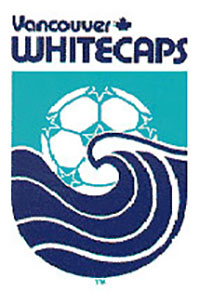
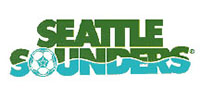
Barry—an inter-collegiate soccer champion and, captain of the premier state league team for eight years, and former director of operations and general manager of the Seattle Sounders and Vancouver Whitecaps—had organized Seattle’s Amputee Soccer Team and founded Amputee Soccer International.4 The USMILGP in El Salvador had discovered a goldmine in Barry. Now, Thill had an all-encompassing medical program that addressed the physical and mental issues of military IED victims. But the progress in prosthetics and rehabilitation was slow until an Army civilian prostheticist from Walter Reed accompanied a medical MTT to El Salvador.
James W. Cloud from Pemberton, West Virginia, was what was needed to “kick start” the prosthesis and rehabilitation program among the veterans and medical staff in the armed forces of El Salvador. Cloud had lost both legs, the right leg above and the left leg below the knee, as a fourteen year old trying to “hop a rolling gondola car” to steal coal for his needy family. That 21 October 1953 night radically changed the life of the high school dropout. Relegated to Morris Memorial Hospital for Children in Milton, West Virginia, Cloud learned to walk on prosthetic legs as he pushed child polio victims in wheelchairs. His father’s coal miners union had paid for this first pair of legs.
However, hallways and sidewalks did not build strength and balance, both of which were needed to climb the hills to reach his house back home. And he had to climb high school stairs when he returned. Cloud said, “It takes a year for an amputee, who really works at it, to learn to walk confidently, as he had before and where he had before—on all surfaces, steps, and over all terrain.”5
After high school, Cloud began a four-year apprenticeship in prosthesis construction at the West Virginia Vocational Rehabilitation School. The program director, Fred Thompson, thought that he might make a good “leg” man. He then worked for several years at the J.E. Hanger Company, today’s premier prosthetic manufacturer. Within ten years of his accident, the young West Virginian was a “leg man” at Walter Reed Army Hospital, just prior to the peak of the Vietnam War with its plethora of arm and leg injuries.6
The Vietnam War “jump-started” Jim Cloud’s career when he became lead prostheticist on the amputee surgical-rehabilitation-recovery team at Walter Reed. He demonstrated the value of getting the prosthetics specialist involved before, during, and after surgery. That way he knew what he had to work with from the beginning, instead of having to rely on X-rays and descriptions by the orthopedic surgeons afterward.7
His reputation for practical prosthetic solutions, based on his personal experiences, was why Cloud was asked to build a prosthetic leg for the president of Peru, Juan Velasco Alvarado. While the United States was deeply involved in Vietnam, Peru had accepted large military arms packages and training teams from the Soviet Union and had been sending pilots to American and Russian flight schools. However, despite the best efforts of Soviet bloc prosthetic specialists, the Peruvian president could not walk properly.

